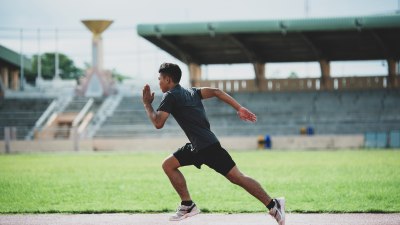Why your “waterproof” backpack fails the moment it actually rains
Discover why waterproof backpacks often disappoint in real rain conditions and learn how to choose the right one.

Image by lookstudio on Freepik
When it comes to outdoor adventures, having the right gear can make all the difference. A durable, reliable backpack is often at the top of every adventurer's checklist. The term 'waterproof' is frequently slapped onto many products, including backpacks, but what does it truly mean? Many consumers have found out the hard way that the waterproof claims of their backpacks often falter in the face of actual rain. This article delves into the reasons behind these failures and offers insights on selecting more reliable options for protecting your gear.
The Definition of Waterproof
To understand why waterproof backpacks can fail, it's vital to define what waterproof actually means. In the gear industry, 'waterproof' refers to an item's ability to resist water penetration. This is often tested under specific conditions that may not accurately represent real-world scenarios. Products that are labeled waterproof might only withstand water up to a certain pressure or for a limited duration. It's crucial to note that many waterproof backpacks are designed more for water resistance rather than complete waterproof capability.
The Myth of 'Waterproof'
Consumers often fall into the myth that waterproofing is an all-encompassing feature. Unfortunately, many manufacturers utilize this marketing tactic without thoroughly testing their products or defining the limits of their waterproof claims. For example, a waterproof backpack can still allow water to seep in through zippers, seams, or closures not designed to be watertight. Additionally, when exposed to prolonged rain, even the most effective waterproof materials can become saturated and fail to keep contents dry.
Material Limitations
The materials used in making the backpack play an essential role in its waterproof capabilities. Many backpacks are crafted from synthetic fabrics like nylon or polyester that may be coated with a waterproofing agent. However, over time and with repeated use, these coatings can wear off, leading to decreased resistance to water. Furthermore, the construction methods, such as stitching and seam sealing, can dramatically affect a backpack's ability to withstand heavy rain. Poorly constructed seams can lead to water ingress, rendering even the best materials ineffective.
Design Flaws
Even the most durable materials can be undermined by poor design. Features such as open pockets, exposed zippers, and unprotected areas can lead to water entering the bag. For instance, if a backpack has exterior pockets that aren't covered or sealed, water can easily leak through these areas even if the main compartment is waterproof. This oversight often leaves users with wet gear when caught in the rain.
The Impact of Zippers and Closures
Zippers are often one of the weakest points in waterproof design. Many backpacks feature zippers that are not waterproof, allowing water to penetrate the bag at these openings. Even with waterproof zippers, if they are not sealed correctly or are worn out, they can still allow water ingress. Additionally, the way closures are designed can impact waterproof capabilities. Roll-top closures are generally more effective than traditional zippers in terms of keeping moisture out, yet they may still not guarantee 100% waterproofing.
How Long Can They Resist Water?
Another key factor is how long a backpack can resist water. Many so-called waterproof backpacks can withstand light rain for a short duration but will become ineffective in heavy rains or extended downpours. This is an essential consideration if you plan on hiking or camping in areas where weather conditions can change rapidly. The reality is that relying solely on a backpack's waterproof label doesn't guarantee your belongings will stay dry, especially in extreme conditions.
Environmental Factors
Environmental factors can also contribute to the failure of waterproof backpacks. Outdoor conditions such as prolonged exposure to wind-driven rain or submerging in water can overwhelm the waterproof capabilities listed by manufacturers. For instance, if a backpack is caught in a torrential downpour, excess water can pool on the surface, and even the best waterproof treatment won't save it from saturating storage compartments. Understanding how your chosen equipment interacts with different environmental factors can help set realistic expectations.
Best Practices for Waterproofing
To enhance the waterproof capabilities of your backpack, follow some best practices. First, use a rain cover specially designed for your backpack. While this adds an extra layer of protection, it can be cumbersome to carry. However, it's invaluable during sudden downpours. Secondly, pack items in waterproof dry bags before placing them inside the backpack. This layered approach ensures that even if the main pack gets wet, your contents remain dry and damage-free.
Reinforcing Waterproof Features
If you already own a backpack that is not adequately waterproof, you might consider reinforcing its waterproof features. Products such as waterproofing sprays or seam sealers can help improve the bag's water resistance. These spray-on solutions can rejuvenate older backpacks or add protection to new ones. However, always ensure that you follow the manufacturer's guidelines to avoid damaging the fabric or coating.
Choosing the Right Backpack
When selecting a backpack, assess your specific needs. Look for fabrics labeled as 'waterproof' and those constructed with reinforced seams and waterproof zippers. Read reviews and verify the actual experiences of other users, as these insights can illuminate a backpack's real-world interactions with rain. Prioritize functionality in your selection; a backpack might be waterproof but can still fail if it's not suitable for your activity or doesn't fit well.
In summary, while many backpacks are marketed as 'waterproof,' the reality often falls short under real-world conditions. A combination of material limitations, design flaws, and environmental factors can lead to disappointing experiences during actual rain. Therefore, understanding how waterproofing works, utilizing best practices, and carefully selecting your backpack are crucial steps in ensuring your gear remains dry and protected. By comprehending these factors, you can make informed choices that keep your belongings safe from the elements.











